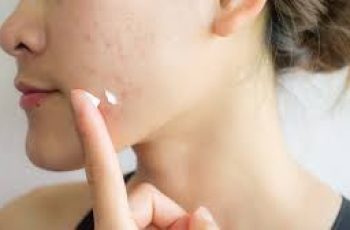Do I need to exfoliate before using a mask?
If you’ve had a facial before, you know that it takes time and effort to achieve that radiant, baby-soft skin that you get at the spa. With a professional facial, you can expect 3 to 4 or even more skin-perfecting steps, each
designed to treat a different layer of skin.
With that in mind, when using masks at home, one wonders why we sometimes use masks without taking the time to include these extra steps. Then exfoliating before applying the mask adds a touch of luxury and gives your skin the
extra care that a professional treatment brings.
So today we will give an example to illustrate why you should exfoliate when using a mask.
Should I exfoliate before or after applying a mask?
To ensure your skin is getting the best care possible through the use of masks and other steps in your daily routine, it’s important to follow some basic skin care rules.
By this we mean that you must always make sure your skin is completely free of makeup as well as any germs or debris before applying a mask. That way, you can use a clay, mud, or cream mask to keep impurities from sticking to
your skin. This often results in clogged pores and the appearance of pimples and blackheads on the skin.
When it comes to the extra step of exfoliation, it’s best done after cleansing the skin and before applying a mask. This helps keep the face clean and removes any remaining product residue and buildup, while the exfoliating
particles slough off dead skin cells.
Then you’ll find that the active ingredients in the mask of your choice work faster and more impressively to improve your complexion, leaving it radiant, detoxified and healthy. If you want to learn more about face masks and
the benefits of different formulations for your skin, you can read my previous blog on how often to use a face mask in your skincare routine.
After removing the mask, you should apply a toner. However, make sure the formula does not contain AHAs or BHAs, as this can be too much for the skin and can lead to dryness and breakouts.
Can I apply a mask after exfoliating?
As long as you make sure the mask formula doesn’t contain any chemical peels or other strong ingredients that might stress the skin too much, this should be perfectly fine. Peel-off masks are best avoided as they cause the skin
to stretch and strip it of vital moisture and sebum.
When this imbalance occurs, the skin usually overcompensates and starts producing excess sebum to restore the skin’s natural protective barrier. This all leads to a cascade of inflammation that leads to breakouts, redness, and
scaly, dry areas of the skin.
Can I exfoliate and apply a mask on the same day?
You really can! As mentioned earlier, you should only exfoliate your skin before applying a mask if any subsequent steps in your skincare routine do not include AHAs, BHAs, or other chemical exfoliants.
Daily Exfoliating Skin Care. makeup remover. Cleanse your skin with a non-foaming cleanser. Exfoliate with a physical exfoliator or a cotton pad soaked in a chemical exfoliator. Using a Clay, Mud, or Cream Mask. Rinse skin and
use a non-exfoliating floral toner to remove any residue
Cleanse your skin with a non-foaming cleanser. Use a mask of your choice, including peel-off masks. Gently wipe skin with a cotton pad soaked in AHA toner Apply a generous amount of serum containing hyaluronic acid or
niacinamide. eye cream. Moisture Cream. Daily SPF (mornings only)
To get a better idea of which procedure is best for you and your skin type, you can try both procedures and see how your skin looks and feels. Once you find the right daily routine, you’ll find that your skin looks better than
ever: clogged pores are cleared, the texture feels and looks smoother, and blemishes or breakouts are visibly reduced.
What should I do after wearing a mask? After using the mask, you should continue with the rest of your skincare routine. Of course, remember to add active ingredients that nourish, protect and rejuvenate your skin to keep it at
its healthiest.
You’ll find the following ingredients should work for your skin type. If you find that your skin type is drier or more sensitive, it’s best to consult your doctor or dermatologist to be on the safe side.
As always, we strongly recommend that you perform a 24-hour patch test on any new product or ingredient you are adding to your routine for the first time. This will help you avoid rashes or irritations caused by ingredients that
are too strong and irritate your skin.
Vitamin C (also known as ascorbic acid and L-ascorbic acid). These active ingredients are most effective at moisturizing and nourishing the face, balancing and restoring calm to the skin’s outer layer, which is often damaged by
free radicals such as pollution, UV rays and other environmental factors. We have linked a dedicated blog post for you to learn more about all the skin benefits of using the above ingredients.
Hope we’ve answered some of your questions about exfoliating with face masks today. It would be such a shame not to take the extra time to get a spa-like facial at home! If you try one of the many Procoal face masks you’ve
purchased for yourself, don’t forget to tag us in your mask selfies on Instagram!
DQH Can I use salicylic acid first and then vitamin C?
It’s easy to create a skincare routine, but knowing how to use it is another thing entirely. In most cases, if you’re not getting the desired skin results, it could be due to the layering of conflicting ingredients. So, is it possible that salicylic acid and vitamin C are such ingredients? Or are these active ingredients the duo that’s been missing from your skincare routine? If you want answers, stick around because today we are going to explain the benefits of salicylic acid and vitamin C and how they can be used in your daily life.
What are the benefits of salicylic acid for skin?
Salicylic acid is one of the most commonly used beta hydroxy acids and is favored by many people with oily, acne-prone skin. This acid is derived from willow bark, and unlike its water-soluble relatives (called alpha-hydroxy acids), salicylic acid is oil-soluble, which means it can penetrate deeper into the lower layers of the skin. Once it reaches the lower layers, it can help unclog pores of excess sebum, dirt, bacteria, debris, and impurities. This results in clearer skin tones and greater definition.
Not only does salicylic acid benefit the underlying layers, but the outer surface of the skin benefits as well. When applied to the skin, salicylic acid removes the buildup of dead skin cells. This is accomplished by breaking the bonds that hold dead cells to the surface. Over time, this can cause the complexion to look dull and prone to acne, blackheads, and other blemishes.
If you’d like to learn more about salicylic acid and how it can improve your skin, check out this dedicated blog post from a beauty insider.
What are the benefits of vitamin C for skin?
Vitamin C is considered one of the most powerful antioxidants, which means it is very effective at fighting free radicals and preventing them from causing further skin damage. Examples of free radicals include pollution, central heating, UV rays and harsh climate. They attack proteins, fats and cell membranes as soon as they come into contact with the skin, causing signs of premature aging such as fine lines and wrinkles as well as hyperpigmentation, flaky patches of skin and loss of elasticity.
Many people usually prefer to use vitamin C in their morning routine as this ingredient gives the complexion a radiant glow. You’ll also find that vitamin C can target areas of hyperpigmentation, plumping the skin and reducing the appearance of fine lines and wrinkles.
The thing about vitamin C is that there are a lot of outdated studies going back to the 1950s that describe vitamin C as an unstable skin component. Thanks to improvements in modern technology, this is no longer the case as all products now contain a stable form of vitamin C.
Visit The Beauty Insider to learn more about vitamin C. So please check out our blog post.
Can I use salicylic acid first and then vitamin C?
Yes, you absolutely can. In fact, it’s thought that using salicylic acid before using vitamin C ensures it penetrates faster and works faster.
This is an efficient way to utilize two power sources, and the reason has to do with pH. For example, the skin’s natural pH is about 4.7, making it slightly acidic. Salicylic acid and vitamin C are also both acidic, and you’ll find that vitamin C is absorbed quickly into the skin. Therefore, using salicylic acid beforehand can increase the acidity of the skin and allow vitamin C to penetrate into the skin faster.
While this is considered an effective way to combine two powerful ingredients, you need to be aware of your skin type and how it reacts to certain active ingredients. Even people with perfect, normal skin can experience skin sensitivity and irritation. Therefore, always consult a doctor or dermatologist before using any new products on your skin.
It’s also important to follow skin application rules. In this case, you need to use the product correctly to ensure you get the best results for your skin. If you’re not sure what I mean, the basic rule for skin is to start with the thinnest consistency and work your way up to the thickest consistency. This prevents a barrier from forming on the surface, preventing other active ingredients from penetrating the skin.
Can I use salicylic acid at night and vitamin C in the morning?
Yes, absolutely, this is considered the most effective way to get returns without any adverse side effects. This is because there is enough time between applications to ensure that the skin’s pH levels return to balance.
You’ll also find that Vitamin C is rich in antioxidants and is perfect for use in the morning to ensure your skin is protected and looking its healthiest. Due to the small size of salicylic acid molecules, it is an acid that is able to reach the deepest parts of the skin. While this is effective at keeping skin clear, it also increases the risk of irritation and photosensitivity. Therefore, many people prefer to use powerful BHAs in their evening routine without exposure to UV rays, pollution, or harsh weather.
Warning: If you avoid using sunscreen every day, none of these ingredients will do what your skin needs. The combination of chemical peels and powerful ingredients increases the risk of further damage to the skin’s surface. Use SPF 50 every day to keep your skin protected and your lipid barrier healthy, even on cloudy days, keeping your skin in top condition.



